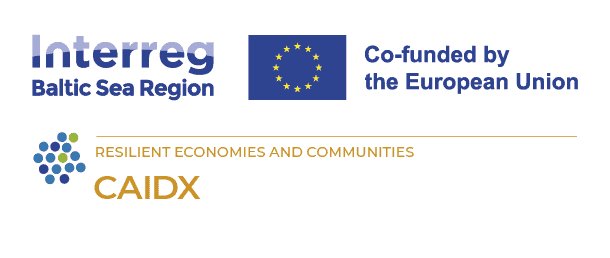
From concept to clinic: piloting of Clinical AI Pathway tools in CAIDX
16 December 2024
What is piloting and why are we piloting in CAIDX? By definition, piloting means testing before rolling out, which is what CAIDX is doing. The aim is to create valuable tools that can be used by healthcare professionals, researchers, and companies to facilitate development and increase integration of AI-solutions in the healthcare sector.
The overall outcome in CAIDX is a Clinical AI Pathway Toolbox, which is a comprehensive development guide from idea to deployment, including specific tools such as:
- The Game Plan
- Needs Identification
- Public-private collaboration frameworks
- Data security and privacy
- Implementation guide
However, how do we know if the tools are useful? We only know this by asking those working with AI in healthcare or developing AI solutions. We should not develop something that is not relevant to those who will end up using it. Therefore, CAIDX is piloting the tools with different stakeholders to ensure their usefulness.
In CAIDX, we have three different pilots using different methods in various use-cases. Use-cases are real AI projects or solutions that are being developed or implemented in the healthcare sector.
In total, the three pilots include 16 different use-cases sourced from all six CAIDX partner countries (i.e., Finland, Sweden, Poland, Estonia, Germany, and Denmark). The pilots cover the areas of initiation, development and implementation of AI solutions. The use-cases include both imaging and clinical AI solutions, certified and non-certified products, developed by hospitals and/or companies.
Piloting of the Clinical AI Pathway Guide as the overall development guide
Piloting of the Clinical AI Pathway Guide has just started and will continue in 2025 by having surveys, interviews, workshops, and real test in the clinical use-cases.
This AI development model serves as a practical guide, ensuring all aspects from concept to final operation are considered. It highlights the need for flexibility and an iterative approach, as AI development is rarely linear. The model consists of six phases, with arrows showing that the process is dynamic, allowing for refinement by moving between stages.
Key tasks—addressing e.g. technical functionality, clinical development, commercialization aspects, and regulatory considerations—are emphasized throughout all phases, acting as continuous processes critical for the overall success of the AI solution. It will also include a stakeholders regarding who are the main responsible for the key tasks to foster multidisciplinary collaboration.
Piloting of the Project Initiation Tools
The piloting of the project initiation tools consisted of expert interviews and two roundtables with participants with various expertise such as legal officers, innovation officers, clinicians, medical ethicists, IT, data protection officers, analytic officers, and others.
The Project Initiation tools include:
- The Game Plan
- Needs Identification
- Guiding Principles for Public-Private Cooperation
From the initial results of our pilot interviews, we strongly believe that these tools will be a valuable resource for anyone looking to start a new AI project.
The Game Plan provides an overview of all possible paths when developing AI tools, helping researchers choose the right approach (i.e. independent development, R&D collaboration, co-development, or purchase).
The Needs Identification tool is designed to help clinicians and researchers to define clinical needs and can be a critical resource for hospital management when comparing and prioritizing various AI projects. It allows researchers to thoroughly assess the problem, the solution, and the resources needed to realize the project.
Guiding Principles for Public-Private Cooperation act as a guideline for forming cooperation agreements between medical centers and private companies. It highlights essential topics that should be addressed in legal agreements and can be a vital tool when entering negotiations with private companies.
These tools will be published January 2025.
Piloting of the Implementation Guide
The piloting of the Implementation Guide has so far consisted of gathering feedback through surveys and interviews with stakeholders in the BSR region. Piloting will continue until mid-2025.
The guide is designed to assist coordinators who are tasked with implementing AI technology, particularly in clinical settings. It outlines three key stages: preparation, implementation, and assessment.
- Preparation involves forming a steering group, defining the AI technology’s purpose, and ensuring that communication and resources are aligned.
- Implementation focuses on training staff, starting with a small pilot group, and adjusting based on feedback.
- Assessment stresses continuous evaluation to ensure smooth adoption and address issues.
The guide emphasizes the importance of involving all stakeholders and maintaining clear communication throughout the whole process.
The deadline for publication of all the tools is by the end of 2025, but presentations of the tools and the toolbox will take place from spring 2025.
If you are interested in learning more about the piloting or the use cases, please contact CAIDX.





